#cuyahoga valley np
Explore tagged Tumblr posts
Text

Moody winter trails. Steady rain with fog creeping through the ravines.
Covered 10.2 miles. Felt refreshed on the trail but happy to get out of the cold.
1 note
·
View note
Photo

cuyahoga valley national park
0 notes
Text

Chestnut-sided Warbler (Setophaga pensylvanica), male, family Parulidae, order Passeriformes, Cuyahoga Valley National Park, OH, USA
photograph by Joshua Clark | NPS
#warbler#wood warbler#parulidae#setophaga#passeriformes#bird#ornithology#animals#nature#north america
220 notes
·
View notes
Note
do you mind headcannon dumping everything you have onto me
idc if I’ve already heard it from you before, give me all your silly ideas about ships and characters and literally any aus you’ve come up with
California and Alaska bleed gold also they have nicknames for each other Big Bear and Little Bear after the Ursa Major and Minor constellations
New York is a pigeon fancier and has six pet rats
Original 13 + Rhode Island have large canines and claw-like nails
Not really a headcanon but I feel like I flip flop between New Jersey actually having horns and a tail or them just being accessories
Massachusetts has a prosthetic leg that he definitely has used to bonk his fellow states from time to time
Florida has serious shark teeth no one can take that from me
Alabama and Florida siblings btw. If you even care
TEXAS AND NEW MEXICO BEING COUSINS IS IMMENSELY FUNNY TO ME “hey New Mex isn’t that guy your cousin” “I don’t know him”
Georgia is the actual epitome of having fat ass and mental issues also his hypersomnia is special to me
Kentucky and Indiana as a duo are dangerous because they’re both incredibly sweet individuals with the best intentions. It’s prolly because of Ben’s portrayal but they’re the same font to me
Texas is closeted as hell but the closet is made of cling wrap. Could be making out with a guy and think “but I’m not gay I just like kissing this guy”
Btw New Jersey is ftm no one can take that from me
Actually speaking of which my California is intersex
Maryland is also ftm and uses she/her pronouns
Some rarepairs that I think are neat:
Satanic Temple/Gov - friends with benefits
Satanic Temple/IDC - “dam Gov that’s your ex!?”
Rhode Island/Hawaii - one of those ships where you throw darts at a wall and it just sticks
California/Kentucky -they should’ve gone on a date to hillbilly festival :(
Kentucky/Maine - i really really need to draw and write them more often 😭
Connecticut/Nevada - bougie ass couple fr
Georgia/Florida/Louisiana - floui is common but Georgia makes it rare. Georgia is the mellow to their chaos duo
Washington/New York - apple wars, what can I say /ref
New York/Rhode Island - does anyone else think this would be so funny?? 😐 someone get them away from each other
Alaska/Minnesota - bear for bear ship
California/Illinois/New York - this ship rocks actually
Therianthrope AU:
Ohio is a white tailed deer who loves to set fire to the ranger station Michigan is often in
He definitely does not do it for attention at all no sir
The Dakotas in this AU are coyotes who left their mothers pack but have a sort of close bond to Minnesota, who’s also a park ranger in this AU
The national park in this AU leans toward made up generic national park but is kinda sorta based off of Cuyahoga Valley NP
California is a ground squirrel in this one cause I think it’s funny
I think I drew Indiana as a cardinal and an otter at one point but these days I kinda feel weasel. Either way, mustelid
That’s about everything I could think of for now I’ll add more if I think of them
#asks for ash!!#ash answers!!#and-the-flame-burns#wttt#welcome to the table#ben brainard#wttt headcanons
14 notes
·
View notes
Text
So I know there are over 430 sites in the National Parks System but only 63 official National Parks. The rest have designations like National Monuments, National Historic Sites, and all that jazz. But sometimes you hear about one of these lesser parks jumping up the ranks to become a National Park.
Now, I know a lot of bureaucracy goes into determining the qualifications for these categories, but a little fantasy makes life on this cold unfeeling space rock more bearable, so I like to imagine these promotions happen because the landscape just… got cooler.
Picture a young park ranger making his rounds at Chattahoochee National Forest, making sure there are no fires or anything, when he steps into a familiar clearing and freezes in place. He takes off his sunglasses and stares like Sam Neill in Jurassic Park. A 4-mile long, 5,000 foot deep canyon has opened up overnight. “Well, that’s gonna mess with the Ruby Falls trail,” he whispers.
That evening when he gets back to his cabin, he hops on his Park Ranger group chat, ready to share the good news. Turns out his friend Steve in Arizona got there first.
“New waterfall just dropped.”
“What?”
“Yeah, there’s a huge waterfall in the middle of the Sonoran Desert.”
“That should definitely promote it from lame National Monument status, right?”
“I don’t know, did you hear about the Ohio redwood?”
“Is that just what it sounds like?”
“Yeah, a 300 foot redwood tree grew in the backyard of the James A. Garfield National Historic Site and they didn’t upgrade that one.”
“Okay, but historic parks don’t really have that upward mobility, Steve. Like, it’s not gonna get more historic.”
“A giant redwood in Ohio is pretty historic! I heard it’s all politics. They already made Cuyahoga Valley a National Park and they’re not gonna do another Ohio one so soon.”
The ranger vaguely remembers another interesting story that had been rumbling around the group chat. “Becca, how are those crystals coming along?”
A few months before, his colleague Becca had been giving a tour at Blanchard Springs Caverns in Ozark National Forest when she stumbled upon a hither-to unseen chamber in the caverns filled with hundreds of iridescent flower-shaped crystals that gently sang in four-part harmony when water dripped onto them.
“Oh yeah, some higher-ups from NPS came by and took some notes, but they said keep an eye on the crystals and let them know if they multiply into the thousands or if we identify any incidents of missing body parts regrowing after rubbing one of the crystals.”
“That seems like overly harsh criteria.”
“That’s what I said. Apparently Carlsbad Caverns has one that can regrow kidneys. But only kidneys for some reason.”
“That’s weird. New River Gorge became a National Park and it’s way less cool than your crystals.”
“It’s my understanding there were some classified elements at play.”
The young ranger leans back and takes a deep pull from his Gatorade. He knows what “classified” means for the NPS. Those darn sasquatches.
19 notes
·
View notes
Photo

Happy First Day of Fall! Cuyahoga Valley National Park in Ohio is gorgeous in every season, but there's just something special about Blue Hen Falls as the autumn shades come into their full glory. Over 125 miles of trails are available for your hiking pleasure in the park. These trails range from nearly level to challenging, and pass through various habitats including woodlands, wetlands and fields. Some trails require you to cross streams with stepping stones or log bridges, while others, including the Ohio & Erie Canal Towpath Trail, are nearly level and are accessible to all visitors. The cooler temperatures and lovely fall colors combined are the perfect invitation for an autumn stroll. Photo courtesy of Gabe Leidy.
#Cuyahoga Valley National Park#cuyahoga valley#national park#national park service#NPS#ohio#usinterior#public lands#national parks#outdoors#america's great outdoors#nature#seasons#Fall#autumn#fall colors#waterfalls#amazing view#awesome experience
2K notes
·
View notes
Text

Thanks to a multiyear, multimillion dollar cleanup, what was once a toxic junkyard has become a flower- and fauna-filled zone at Cuyahoga Valley National Park in Ohio. Many national parks contain environments that have been remediated and reclaimed. Photograph By Chris Davis, National Park Service
It Was a Toxic Wasteland. Now It’s a National Park.
After a $50 million cleanup, flowers and wildlife replace chemicals and rusting cars in one corner of Ohio’s Cuyahoga Valley National Park.
— By Shannon Bohle | May 2, 2022
A junkyard that once held rusting cars and thousands of barrels of oozing toxic chemicals just got added to a national park. The former Krejci dump, a 45-acre parcel that operated from 1948 to 1980, opened to the public in December as part of a 200-acre addition to Cuyahoga Valley National Park, a 33,000-acre swath that winds between Cleveland and Akron, Ohio.
Over the past 16 years, this corner of land near the Cuyahoga River was transformed from a Superfund site into a wetland teeming with birds and plants. It’s the most extensive and expensive of the hundreds of ongoing reclamation and rehabilitation projects overseen by the National Park Service (NPS).
Their work turns toxic zones—left behind after coal mining, oil drilling, or hazardous waste dumping—into safe, enjoyable outdoor oases. “Virtually every national park within the system has a contaminated site,” says Veronica Dickerson, a manager at the National Park Service’s Environmental Compliance and Cleanup Division. “People think of bugs, bunnies, and beautiful scenery associated with national parks, but I manage 13 of the messiest projects in the park service.”

Millions of people visit the varied and stunning landscapes of the NPS each year. Few realize that many parks didn’t start out as pristine wilderness. The Grand Canyon once held a uranium mine on its south rim; copper and arsenic extraction sites used to pollute what’s now Joshua Tree National Park. National parks are growing, evolving landscapes that, over time, have been given or acquired new parcels that required remediation.
Today, Cuyahoga Valley National Park’s new acres offer travelers a chance to dip into a revived natural space. Here’s how it went from a wreck to an environmental triumph.
Pollution Inspires a Movement—and an Ohio Park
After the polluted Cuyahoga River caught fire for the 13th time on June 22, 1969, magazines including Time and National Geographic ran articles and photos detailing the area’s ecological crisis. The national outrage that followed catapulted Cleveland to the center of America’s new environmental movement, helping to create the Environmental Protection Agency in 1970 and to pass The Clean Water Act of 1972.

A 1985 photo shows the Krejci dump, a toxic Superfund site that has been rehabilitated and reopened as part of Cuyahoga Valley National Park. Photograph Courtesy of NPS Collection
The Clean Water Act inspired both governmental agencies and volunteer groups to clean out waterways across the U.S. It also spurred the creation of the 33,000-acre Cuyahoga National Recreation Area, which the NPS designated in 1974 to protect and restore one quarter of the length of the Cuyahoga River. It was named a national park in 2000.
The NPS continues to purchase private land adjacent to national parks and recreation areas, removing manmade structures and environmental hazards with the goal of restoring areas to their natural states. That’s what it did in 1985 in the Cuyahoga National Recreation Area, when it acquired the Krejci salvage yard, which had been operated by John Krejci. Sr., and his family for more than 30 years.
From Superfund Site to Wetlands
An Environmental Protection Agency study found that the Krejci dump was contaminated with toxic and hazardous waste including PCBs, benzene, cadmium, and lead.
The U.S. government filed a “Superfund” lawsuit in 1997, a legal action that can hold polluters financially responsible. Fences, signs, and barricades went up, and the long process of reversing the damage began.
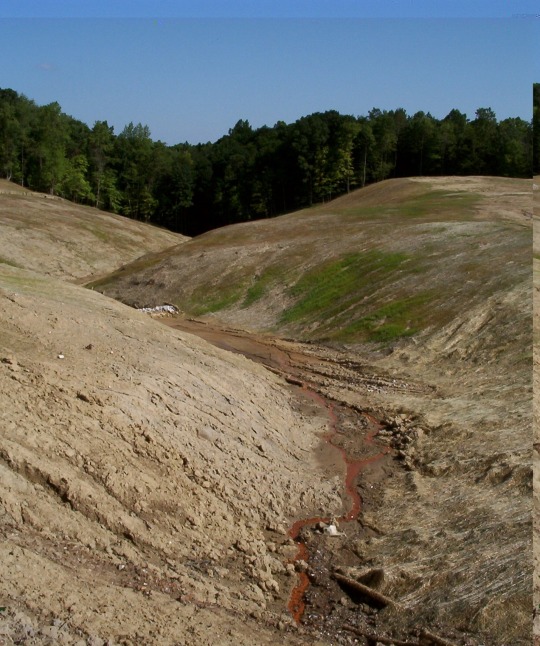
A 2006 photo shows the Krejci dump site after toxic soil had been removed. The resulting ravines had to be shored up as part of a $50 to $60 million clean up. Photograph Courtesy of NPS Collection
“The river here was dead. Not like just a few fish, but no fish. It had zero oxygen in places,” says Chris Davis, a Plant Ecologist for Cuyahoga Valley National Park. “Krejci was a ‘biological desert,’ meaning almost nothing could live in the area.”
The EPA administrates Superfund sites, forcing the parties responsible for the pollution to fund cleanups. For the Krejci site, six companies, including Ford and General Motors, shelled out between $50 and $60 million. “The total cost was exorbitant; it was the largest cleanup by far in National Park Service history,” says Davis.
Cleanup and reclamation efforts began shortly after the Superfund case was settled in 2002. Ford paid for and organized the removal of 375,00 tons of contaminated soil in 2002, which required machines to dig to a depth of up to 25 feet. The park service began naturalizing the area in 2012, grading the soil and recreating 3.5 acres of seasonal wetlands and planting native grasses, wildflowers, and sedges.
A Natural Wonderland Reborn
Today, the former Krejci dump is a site of environmental renewal. Located in the central region of the park, it’s a plant- and animal-filled seasonal marshland teeming with wildflowers, Jefferson salamanders, American toads, bald eagles, and woodcocks.
“If someone is interested in habitat restoration, there’s no better place,” says Davis. “This was a toxic wasteland only a few decades ago. To find this diversity of species there today is remarkable.”
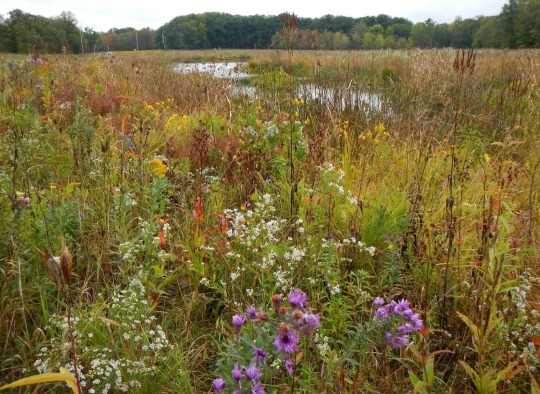
Wetlands and seasonal wildflowers now dominate the former Krejci dump site. Photograph By Chris Davis, National Park Service
No official trails, facilities, or bridges exist in the Krejci acres yet. For now, the best way to see the dump-turned-dreamland is by driving along Hines Hill Road between Brandywine Falls and the Boston Mill Visitors Center. A pull-off on the eastern side of the road accesses a small trail into the area; Davis calls it “a nice, quiet place to contemplate nature.”
It’s just one of many restored and reclaimed sites within the national park. Nearly three million people visited it in 2021 to bike and walk along the Ohio & Erie Canal Towpath trail, canoe in the river, or snap photos of Brandywine Falls, a 65-foot-tall waterfall that plunges into a gorge.
One of the earliest restoration efforts in the Cuyahoga Valley park happened in 1984 when Cleveland- and Akron-area Sierra Club members worked with the NPS to clear out another auto scrapyard. Those efforts led to the popular Beaver Marsh zone in the southern half of the park. Now, it’s among the park’s most-visited spots, where joggers, bikers, or walkers cross a 565-foot-long boardwalk to see dam-building beavers or painted turtles bobbing amid lily pads.
Sierra Club member Peg Bobel remembers that original cleanup. “The visible pollution in the river was just heartbreaking,” she says. “The hands-on, grassroots environmental movement and the national laws being passed worked hand-in-hand.”
— Shannon Bohle is an Ohio technology and science writer whose work has appeared in Nature and the Journal of the Medical Library Association.
#Toxic Wasteland#National Park#Shannon Bohle#Cleveland | Akron | Ohio.#Krejci Dump#Cuyahoga Valley National Park#Cuyahoga River#National Park Service (NPS)#wetlands | Birds 🦅 | Plants 🌱#Veronica Dickerson#National Park Service | Environmental Compliance | Cleanup Division#Pollution#National Geographic#Environmental Protection Agency#Chris Davis | Plant Ecologist | Cuyahoga Valley National Park#EPA Administration#Natural | Wonderland | Reborn#Brandywine Falls | Boston Mill Visitors Center
9 notes
·
View notes
Text

2 notes
·
View notes
Text
Cuyahoga Valley National Park During the Covid Pandemic
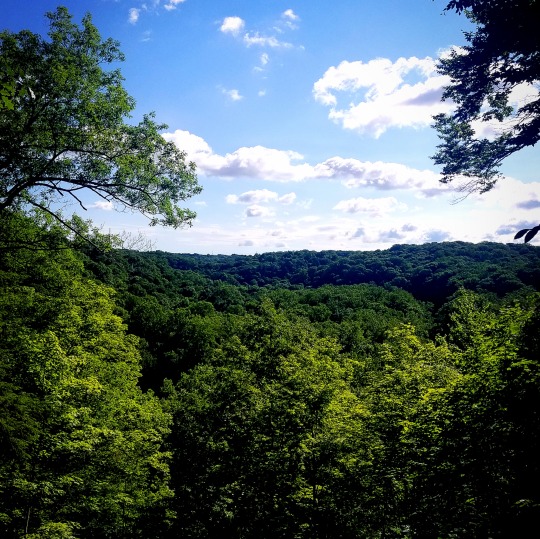
Cuyahoga Valley National Park, June 24, 2020. Photo by Braid Kopling.
Since I am traveling home across the country, I decided to briefly stop at some new (to me) parks along the way. Cuyahoga Valley is the first of 4 and is just stunningly beautiful. Boasting over 100 waterfalls, it is a gem.
Cuyahoga Valley National Park, June 23, 2020. Photo by Braid Kopling.
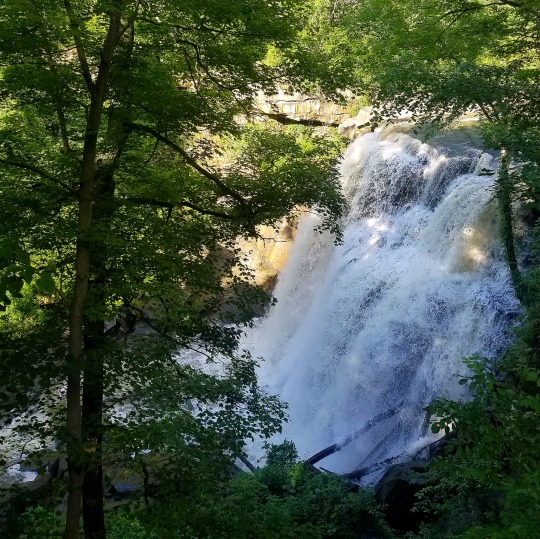
First things first - Just how is the park dealing with Covid-19? Well, I will say this is the first time I have visited a park and not been able to find a trusty flat brim hatted Ranger. All the bathrooms were closed, but there were plenty of portable bathrooms (which I don't understand- don't they need the same cleaning and sanitation as regular bathrooms and I sure missed being able to wash with soap after). In my 7 hours of daylight at the park, I only saw one group (a team of high school cross country runners) who wore masks. No one else. Boy scouts, children, elderly wore no protection or kept any self distancing precautions. That said, everyone appeared to be locals. The train that runs through the park was not operating, and has no plans to re-commence this summer. No buildings were open. The park was wonderfully largely deserted.
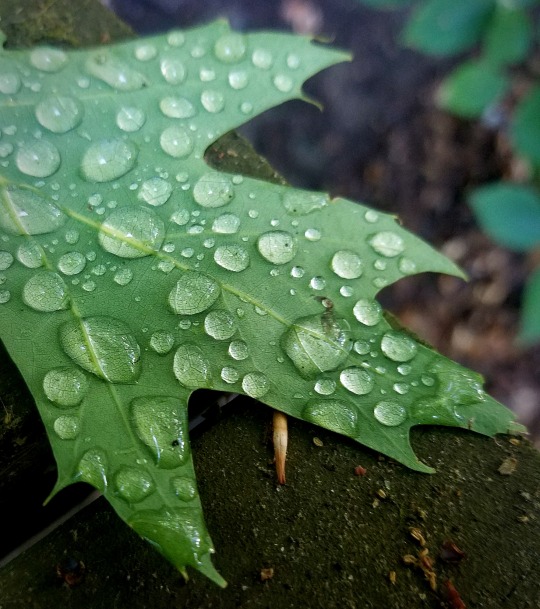
Cuyahoga Valley National Park, June 23, 2020. Photo by Braid Kopling.
I arrived at the park just after a drenching thunderstorm and visited iconic Brandywine Falls first. I was rewarded with spectacular full falls and very few people. While the sound of cars in the largely urban surrounding area was always present, so were the songbirds. Robins, yellow finches, red winged blackbirds and crows were everywhere. I also saw fireflies (!!!), rabbits, many deer does and fawns, and three kinds of squirrels- including an all black one! Aside from Turkey Vultures, I did not see any evidence of predators but certainly, with so many herbivores they must be present. (There were no bear safe trashcans or anything like that.) Although I did not see them, there are beavers and otters, too. I wished I could have asked a Ranger about carnivores!
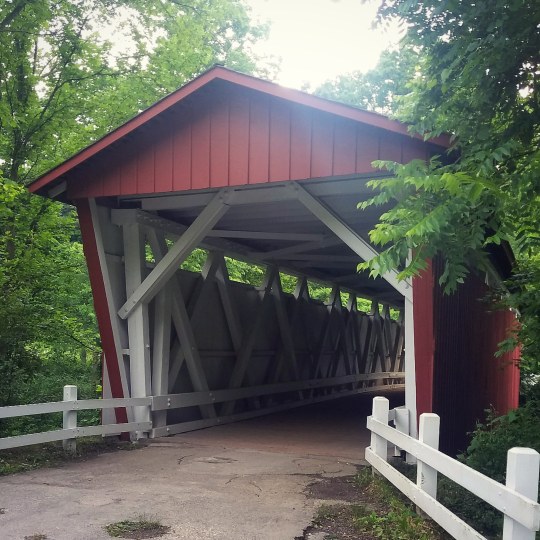
Cuyahoga Valley National Park, June 24, 2020. Photo by Braid Kopling.
The park itself was an interesting mix of land use. While clearly marked on the map (NPS and Google) indicated I was on park land, I saw private residences and farms. Some of the land marked as National Park was actually maintained by the local , but unlike Redwood State and National Park, no mention of that was made in NPS literature. Again, I wished I could have asked a Ranger.
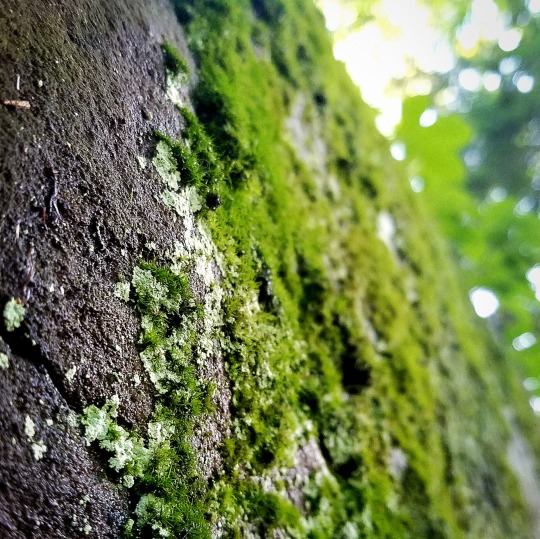
Cuyahoga Valley National Park, June 23, 2020. Photo by Braid Kopling.
The train that runs through the park (not owned or operated by NPS) seems easily like the best way to get around and signage indicated people regularly board with bikes and kayaks and they are easily accommodated.
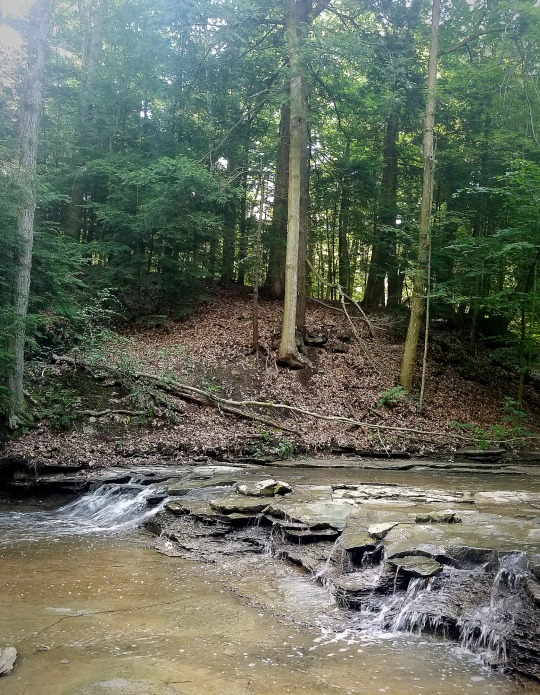
Cuyahoga Valley National Park, June 22, 2020. Photo by Braid Kopling.
Bridal Veil Falls (really more of a cascade) was one of my favorite places in the park. The whole water area was smooth, but not slippery slate. Wonderful to walk on barefoot and not so much volume of water to make moving around difficult. I wish I could have spent hours just walking up and down the creek.
I really loved this oasis of a park in the middle of an urban area. You should put it on your own list of places to visit- or, have you already been? Let me know in the comments.
Cuyahoga Valley National Park, June 23, 2020. Photo by Braid Kopling.
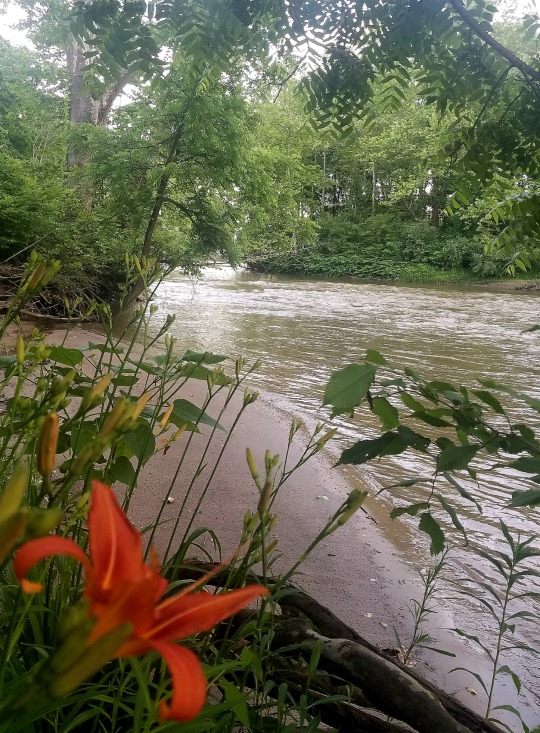
#nps#cuyahoga valley national park#cuyagua#covidー19#roadtrip#road trip#nature#national parks#lucky girl
5 notes
·
View notes
Photo

Cuyahoga Valley National Park, by Emily Iles.
2 notes
·
View notes
Photo
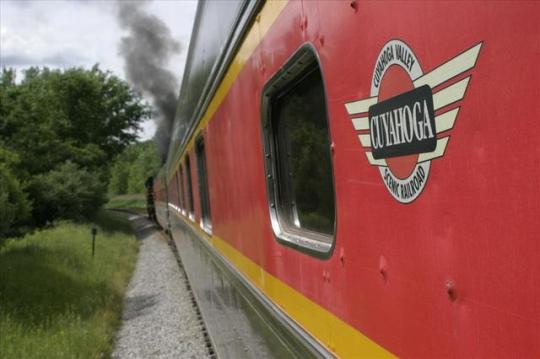
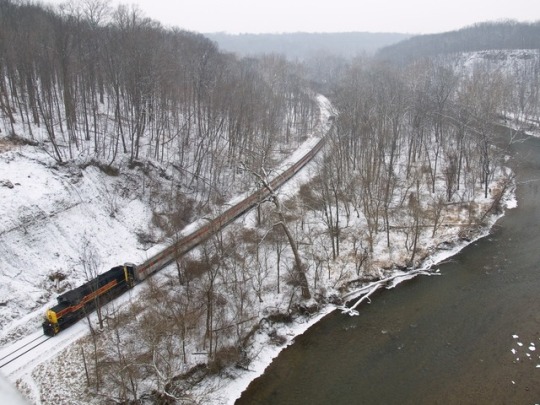
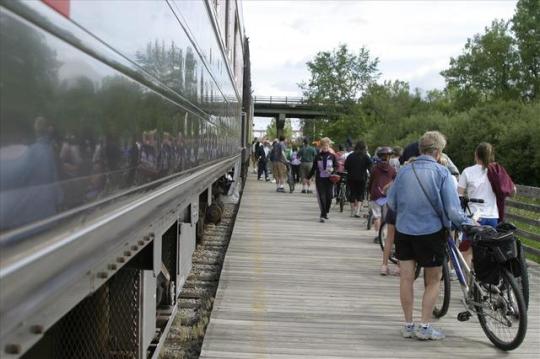
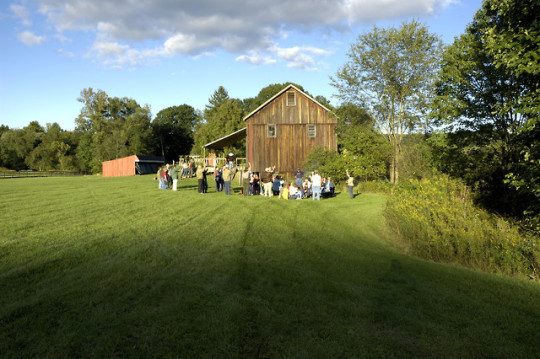


The Valley Railway
Cuyahoga Valley National Park, Ohio
By the 1850s, railroads began to replace canals and riverboats as a more efficient transportation option. The Cuyahoga Valley Railway served as the primary rail transportation for the Valley from 1871 to 1915, and the railway evolved into a part of everyday life for residents throughout Ohio's Cuyahoga Valley.
Along the Valley Railway, new structures were built to accommodate the goods and people moving along the route. Bridges allowed the railroad to cross the ever changing topography. Mills which soon grew into company towns were constructed along the expanding route, as farmers embraced the railroad to ship their products to markets in Cleveland or Akron.
The ultimate end of the Valley Railway’s existence came in 1915 when the B&O assumed complete ownership of what had by that time been renamed as the Cleveland, Terminal and Valley Railroad. Five years later, in 1920, rail companies nationwide were forced to examine their role with the realization that there were cheaper and more efficient modes of transportation capable of carrying loads of coal, heavy ores, passengers and a wide variety of materials via the use of semi-trucks and more powerful locomotives. Because the region – and the nation – was now experiencing the positive commercial effects of alternative shipping methods, heavy reliance on rail service in the Cuyahoga Valley declined.
When interest in the line was renewed as a scenic excursion route in the early 1970s, the Cuyahoga Valley Preservation and Scenic Railway Association was formed. Originally known as the Cuyahoga Valley Line, the scenic railroad now operates as Cuyahoga Valley Scenic Railroad. Although it's just one part of the transportation history of this area, the vital role of the Valley Railway can still be seen across the landscape at Cuyahoga Valley National Park.
Read the full article at nps.gov: Find more about the transportation history of this area, the development and decline of the Valley Railway, and the features of the cultural landscape: Cuyahoga Valley Railway Cultural Landscape
Thanks to Historian Larry Johnson for contributing this article!
#cultural landscape#Ohio#Cuyahoga Valley National Park#NPS#National Park Service#railroad#scenic railroad#transportation#canal#history#preservation#FindYourPark#agriculture#industry
12 notes
·
View notes
Text
Acres of Toxic Chemicals and Rusting Cars Becomes National Park After Amazing Transformation https://www.goodnewsnetwork.org/acres-of-toxic-chemical-barrels-and-rusting-cars-becomes-national-park/

When President Gerald Ford signed a bill creating Cuyahoga National Recreation Area in Ohio in 1974, the boundaries of the site deliberately included a well-known local garbage dump, assuming it could be easily cleaned.
When the National Park Service (NPS) discovered it was a nearly-unmanageable chemical wasteland where even the water and soil were flammable, a decades-long cleanup effort converted it, at the polluters’ expense no less, into a vibrant marsh ecosystem with some of the highest biodiversity in the region.
Where once thousands of rusted barrels oozed out congealed industrial slime, and a soup of pesticides, arsenic, paint, and heavy metals ran along the ground among discarded tires, now lies tranquil forested ponds full of fish, insects, and amphibians. Black-eyed Susans, New England asters, swamp milkweed, and foxglove, visited by birds, bees, and butterflies all grow along the borders of this now thriving ecosystem so clean that NPS staff remark you could eat the very dirt.
“This was a toxic wasteland only a few decades ago. To find this diversity of species there today is remarkable,” said Ecologist for Cuyahoga Valley National Park, Chris Davis.
894 notes
·
View notes
Photo









Cuyahoga Valley National Park
#cuyahoga valley national park#cuyahoga valley#ohio#nps#national park service#national parks#national park#travel#tourism#photograph#photographs#photography
3 notes
·
View notes
Text

Widow Skimmer (Libellula luctuosa), male, family Libellulidae, Cuyahoga Valley National Park, OH, USA
photograph by R. George - NPS
65 notes
·
View notes
Text
There's a National Park in Ohio?! Cuyahoga Valley. This is my 34th NP.



4 notes
·
View notes
Text
Down East Road Trip - Cuyahoga Valley National Park
Down East Road Trip - Cuyahoga Valley National Park - Fine Art Photos and Travel notes from our visit to Cuyahoga Valley National Park, which like a phoenix rising from the ashes, grew out of fire to become Ohio's only national park.
A Park Frozen in Time, Nestled in the Heart of Urban Ohio

As we have come to discover as we’ve embarked on a few of these National Park survey trip over the years, there never seems to be quite enough time. Of course, this is a product of how we plan our road trips – with a desire to sample as many parks as possible – and more often than not it leaves us with hopes of revisiting these…
View On WordPress
#2019#Cuyahoga#Deremer Studios#fine art#history#national park#nature#NPS#ohio#Photography#urban#Valley#waterfall
0 notes